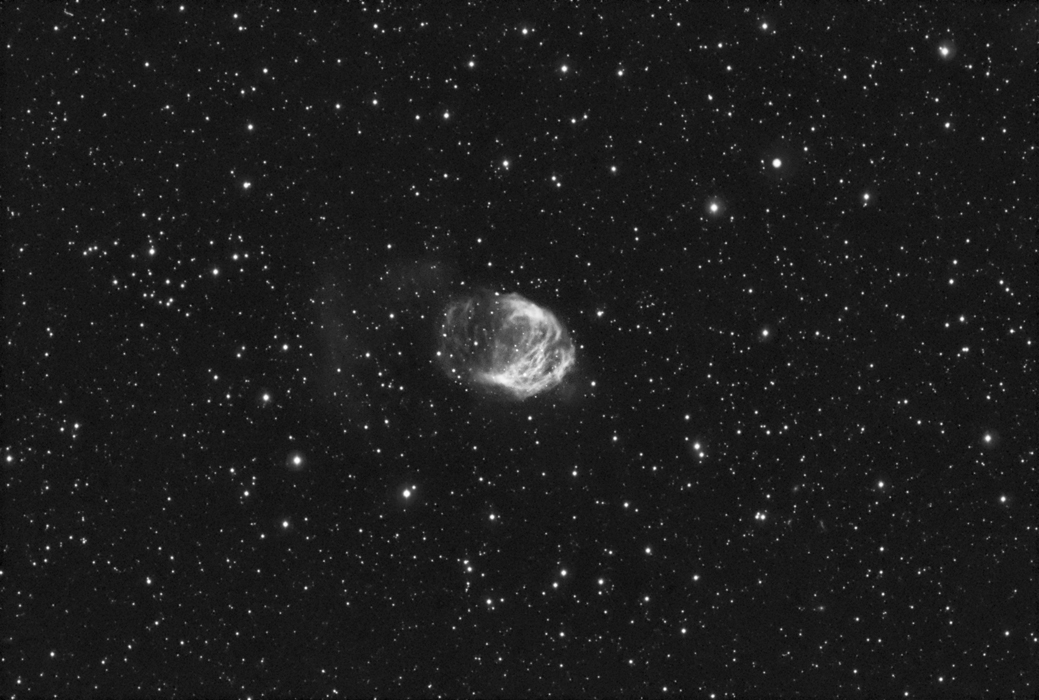Medusa Nebula (A21, PK205+14.5)
Characteristics:
Size: About 10' (4 light years across)
RA: 07h 29m 31s
Dec: 13 degrees 13' 33"
Position Angle: minus 50 degrees
Description:
The Medusa Nebula is a planetary nebula in Gemini. It was
discovered by Abell in 1955 and originally thought to be a supernova
remant (SNR), although this was revised in the 1980s when it was
recognized
to be a very old planetary nebula. It is interesting that another
planetary, SH2-188, was also mistakenly thought to be a SNR, in part
due to its asymmetric shape (most planetaries are symmetric). I
imaged SH2-188
in
2006 and provided some background information regarding planetaries
in general, and SH2-188 in particular. Please feel free to check it out,
since this information also has relevance for understanding the Medusa
Nebula.
I was surprised to see a very distinct, surrounding glow of faint Ha
emission in this image, located just left of center. In a manner
similar to that of SH2-188,
one gets the impression that the Medusa is
coursing through the interstellar medium from left to right, with its
trailing edge being dissipated over time. This would explain why
there is hydrogen gas in its wake and would also explain why the
tail end of the nebula is poorly defined compared to the leading
edge. Unlike SH2-188, however, I cannot find any documentation on
the web to know whether my interpretation of this is correct. The
faint Ha region next to the Medusa can be easily seen in my inverted
image. It is poorly seen, or not seen at all, in most amateur
images of this nebula on the internet. Perhaps it has been
processed out by those thinking that it represents uneven
background! A colleague of mine from Austria, Johannes Schedler,
recognized this as a real finding and captured it in a wonderful wide
field view of the Medusa, shown
here.
The
above image was taken through an Ha filter and will eventually be used
in an Ha/OIII/RGB composite, once I have time to acquire the
data. The linear streak in the upper left hand corner is the
track of asteroid Althaea.
Photographic Details:
Date: February 16, 2008
Scope: Takahashi
FSQ106 at f5 on the Takahashi NJP
Mount.
Autoguider: SBIG ST-402 with
e-finder.
Camera: Apogee U32 -20C.
Filters: Astronomik
6nm
Ha filter.
Exposures: 16 x 10'.
Total
exposure 2.7 hours.
Conditions: Temperature was approximately 23 degrees
F over the course of the night. Clouds moved in after midnight
and spoiled the remaining subs.
Post-processing:
Calibrated, aligned, and Sigma Clip combined
in Maxim, followed
by DDP
in ImagesPlus (IP). Further processing in Photoshop CS (16
bit format).
Please
note: Graphics on this website
may not be reproduced without author permission.
Back to Hydrogen Alpha
Home

